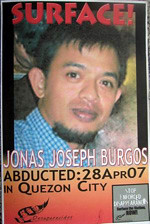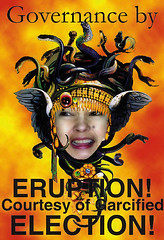Comfort Women: an unfinished ordeal
Conclusions
1. The Japanese Imperial Army and Navy initiated the setting up of a vast network of comfort stations for the exclusive use and "enjoyment" of the Japanese Imperial Army and Navy, before and during the Second World War. The Japanese military planned and executed the provision of comfort facilities to its troops, wherever they were located. Chinese, Korean, Taiwanese, Filipino, Malaysian, Indonesian and Dutch women and girls were put into these comfort stations and sexual services were extracted from them under duress.
2. The taking of these women, even where it was done initially by private persons, was soon handled by the Japanese military itself. It appointed recruitment agents who were given special permits for travel to and from military establishments. These recruiters were actively assisted by the military (kempeitai) and local police, to ensure that the girls and women "volunteered". It is indisputable that these women were forced, deceived, coerced and abducted to provide sexual services to the Japanese military.
3. Detailed regulations were framed by the Japanese military for the setting up, use, operation and control of the comfort stations. The regulations were so detailed that they reduced the women to mere commodities.
4. Life at these comfort stations was living hell for the women. They were beaten and tortured in addition to being raped by 15,20 or 30 soldiers a day and officers by night, day after day, for periods ranging from 3 weeks to 8 years. Living conditions were cramped and shabby. The lives of those who had to follow troops around at battlefronts were put at risk, day after day. Food was usually of poor quality and in short supply. Although medical check-ups by army doctors sometimes took place, many women were afflicted by sexually transmitted diseases. When they were brought to the comfort stations they were virgins, healthy in body and spirit. They left the comfort stations diseased in body and crippled in spirit.
5. As transportation within all areas controlled by the Japanese military was strictly regulated, it is obvious that the military was aware that thousands of Korean women were being transported within Korea and from the Korean Peninsula to places such as China, Burma, the Philippines, the South Pacific, and the Ryuku Islands (Okinawa). Even when passage was arranged on passenger ships, passage had to be authorized by military officials. The witnesses have testified to the fact that many of them were actually transported on military ships, trains and road vehicles. As these were under the control of the then Japanese Government, it bears responsibility for trafficking in women. This responsibility should be accepted by the present government.
6. From 1942 onwards, Japan occupied and controlled the Philippines. It is clear that Philippines were being kidnapped and forcibly detained within military camps. There is sufficient evidence to show that military officials in the Philippines were aware of the fact that Filipinos were being kidnapped and placed in comfort stations.
7. Documents obtained by the ICJ mission contain special requests made by field officers to commanders in Tokyo for the recruitment and transportation of comfort women to their areas. This again demonstrates the knowledge on the part of high-ranking members of the military of the existence or the comfort stations and demonstrates their active involvement in the recruitment and placement of women in those stations. It could not have been otherwise, as Japan was at war and it is clear that any area controlled by the military, and in particular a military camp, would be under tight security regulations.
8. It also emerges from the testimony of the witnesses that, in some camps, Japanese soldiers attempted to kill women who had been in the comfort houses when they realized they were about to lose the war. As these soldiers were under the command or the Japanese military, it remains responsible for their actions.
9. An extremely tragic consequence or the confinement of these women was that their suffering did not end after the war. Faced with untold difficulties, after being abandoned by fleeing Japanese soldiers, some of them reached home, only to live lives of isolation. Typically, it has been a trial of the victims who have had to pay the price of the violations inflicted upon them.
10. Estimates of historians that 100,000 to 200.000 women were made to serve as comfort women are consistent with the large number of Japanese troops stationed throughout the Asia-Pacific region. The vast scale on which these atrocities were perpetrated is truly appalling. Although women were not treated equally in any society at this point in time, they had never been humiliated to this degree. in such vast numbers, for so long.
11. The grinding poverty they were living in. and their social framework, made these girls and women extremely vulnerable to force, fraud, deceit, coercion and abduction. In the context of the Philippines, the Japanese atrocities and wanton acts of brutality caused many of the women to be doubly victimized. A number were arrested on suspicion of being guerrillas or guerrilla sympathizers, subjected to acts of torture, then confined in military camps as comfort women. Others were forced to watch relatives being killed or tortured.
12. Even if it could be established that sonic of the women did agree to go "voluntarily" to the comfort stations, under no circumstances could they have ever imagined what they were letting themselves in for. Further, there was no way they could have known that the military would kill or attempt to kill them or abandon them after the war.
13. The then Government of Japan was directly or vicariously responsible for all that happened to these women. Its actions violated customary norms of international law concerning war crimes, crimes against humanity, slavery and the trafficking in women and children. These acts should have been made a part of the trials which took place at the close of the war. Unfortunately the focus of those trials was on acts committed against nationals of the Allied powers. Japan should take full responsibility now, and make suitable restitution to the victims and their families.
14. The investigation conducted by the Japanese Government is inadequate and appears calculated to placate sentiments rather than being focused on a solution to the issue. A fuller and more complete investigation by Japan is necessary.
15. Regarding the Japanese Government's investigation, although it is important to uncover as many documents as possible, it is equally important to interview witnesses. Former soldiers and officers of the military are alive and should be interviewed with respect to this issue.
16. Questions have been raised within Japan as to whether the government is in fact making public all documents available to it. It has been said that many documents were burned or destroyed in other ways at the end of the war and hence the complete picture may never emerge from documentary evidence. In saying this, we do not mean to undermine in any way the obligation of the Japanese Government to continue to search for all records relevant to this matter. It is difficult to believe that there are no existing police documents with respect to the "recruitment" of women from the Korean Peninsula. The police were often given instructions as to the number of people that needed to be recruited from a specific area and it is difficult to believe that all of these documents were destroyed. Furthermore, recruiters had to be licensed by the local police and, again, it is difficult to believe that all documents authorizing these individuals have been lost or destroyed. The Police Department is the only department other than the Department of Libour to say that there were no documents in its files concerning this issue. We find it hard to accept that this is an accurate statement.
17. In addition, more effort should be made to uncover the diaries of soldiers and officers. Where such materials have been made public, they have been useful in documenting the establishment and operation of the comfort stations. Serious efforts should be made by the Japanese Government to locate all existing diaries.
18. The Allied Powers had full knowledge in 1945 of the fact that these atrocities had been committed. They did nothing to bring those offenders to trial or to obtain reparations for the victims. Clearly they owe a duty to explain this, and to make public all records in their possession, pertaining to this issue.
19. Neither the 1965 Agreement on the Settlement of Problems Concerning Property and Claims Between Japan and the Republic of Korea, nor the 1956 Philippines and Japan Reparations Agreement, present an impediment to the women's claim against Japan. The former was never intended to and did not include "claims" involving the violations of human rights. The latter agreement was for reparations to the "people" of the Philippines because of the devastation wrought on their country. The issue of compensation for individuals was not part of the negotiating process, therefore the treaty was not intended to and should not be interpreted as having settled this issue.
20. Some mechanism should be established quickly to determine the case of each of the women who have come forward so far. It is not sufficient to rely on the court cases in Japan; these may take up to ten years to resolve. Given the age of the victims, this is not an adequate means of redress for the violations of human rights which have been perpetrated against them.
21. As there was no attempt made to hold Japan responsible for its treatment of the comfort women at the close of World War II. the international community, and particularly those countries that were members of the Allied forces, have an obligation to these women to put pressure on the Government of Japan to ensure that it takes adequate measures to rehabilitate and provide full restitution to the women, as those terms are used in the report of Professor Theo van Boven, Special Rapporteur for the study on the Right to Restitution, Compensation and Rehabilitation for Victims of Gross Violations of Human Rights and Fundamental Freedoms. Many of the victims have been surviving at the mercy of friends and relatives. They arc beyond the age where they can be expected to work. Many need constant medical attention and care. Some of them are heavily indebted having taken loans for their bare subsistence. Their rehabilitation will therefore ensure them adequate shelter, medical aid and a decent standard of living. Having regard to the years of neglect already suffered by the women, an immediate interim payment of US $40,000 per victim is warranted.
Recommendations
(b) Japan should expeditiously provide and set up an administrative forum where the claims of the victims can be heard and disposed of within a time-frame of six months or so. Alternatively, Japan should enact appropriate legislation enabling disposal of the pending law suits expeditiously on merits waiving preliminary technical objections of jurisdiction and limitation.
2. If no action is taken as suggested in 1(b), Japan should take steps to fully rehabilitate the victims. This would include making full restitution, as also providing rehabilitative measures such as medical coverage, a decent shelter and other similar measures. Japan has an obligation to fully rehabilitate the victims for the harm they have suffered.
3. In the event of Japan's refusal to rehabilitate the women a tribunal or an arbitration panel, consisting of international law experts from countries not directly concerned with this issue, should be formed as soon as possible. NGOs and individuals should also be permitted to appear in their own right as parties. All parties must agree in advance to abide by/accept the opinion of the tribunal/panel.
4. Pending action under (2) and (3) above, the Japanese Government should pay, as a purely interim measure, without prejudice to its rights and contentions, the sum of US $40.(KM) for the rehabilitation of each woman who has come forward. For this, the NGOs representing the women should submit lists of victims to the Japanese Government.
5. If the Japanese Government persists with its present policy on this issue, the NGOs representing the women should pursue the matter with appropriate organs and specialized agencies of the United Nations, with the aim of seeking the advisory opinion of the International Court of Justice, so as to have the legal issues authoritatively clarified.
6. The Governments of the Republic of Korea and the Philippines must immediately move the International Court of Justice for interpretation of the respective treaties.
7. Those countries that were members of the Allied forces must make a public disclosure of all information in their possession which pertains to this issue and ensure that Japan does take adequate measures to provide full rehabilitation and restitution to the victims.
Note this report is from Comfort Women.org
Related article:
Harry Potter and the Harry Putragis (SOBs)
























0 Speak Out:
Post a Comment